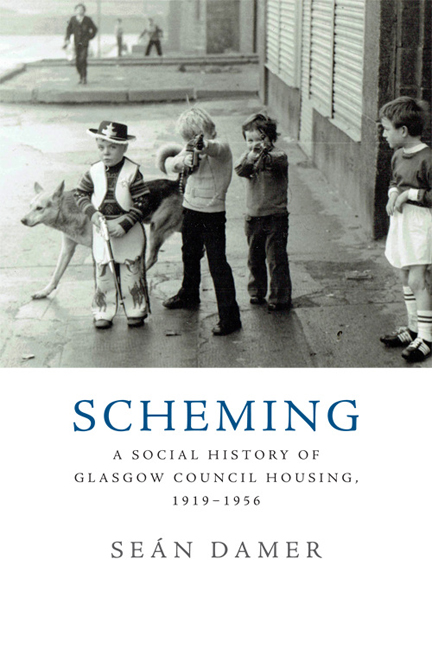Book contents
- Frontmatter
- Dedication
- Contents
- List of Tables and Figures
- Acknowledgements
- Preface
- 1 Introduction
- 2 Mosspark: Homes Fit for Heroes?
- 3 Hamiltonhill: A Pioneering Slum-Clearance Scheme
- 4 West Drumoyne: Blue-Collarland
- 5 Blackhill: Out of the Slums
- 6 Craigbank: Amateur Dramatics?
- 7 South Pollok: ‘The Bundy’
- 8 Alarums and Excursions
- Appendix 1 Balloting for a Council House
- Appendix 2 Methodological Notes
- Bibliography
- Index
5 - Blackhill: Out of the Slums
Published online by Cambridge University Press: 12 November 2019
- Frontmatter
- Dedication
- Contents
- List of Tables and Figures
- Acknowledgements
- Preface
- 1 Introduction
- 2 Mosspark: Homes Fit for Heroes?
- 3 Hamiltonhill: A Pioneering Slum-Clearance Scheme
- 4 West Drumoyne: Blue-Collarland
- 5 Blackhill: Out of the Slums
- 6 Craigbank: Amateur Dramatics?
- 7 South Pollok: ‘The Bundy’
- 8 Alarums and Excursions
- Appendix 1 Balloting for a Council House
- Appendix 2 Methodological Notes
- Bibliography
- Index
Summary
Preamble
Blackhill was an exemplar – and without a doubt the best-known – of Glasgow's third category of housing scheme: ‘Slum-Clearance’/‘Rehousing’. (The terms were and are interchangeable locally.) It was, therefore, not only the antithesis of Mosspark in terms of its tenants, but also distinctly different from both Hamiltonhill and West Drumoyne. Hamiltonhill was a one-off small experimental ‘Slum-Clearance’ scheme, while the latter was an ‘Intermediate’ scheme housing skilled and semi-skilled manual workers. Blackhill housed labourers – the poor, put simply – and was one of a series of similar schemes including Teucherhill, Moorepark (the ‘Wine Alley’), Kintra Street, Possil and Lilybank.
The Legislation
We have seen that the 1930 ‘Greenwood’ – the Labour Minister of Health – and 1935 Housing Acts were designed to attack the mass of workingclass slum tenements which remained untouched by the provisions of the 1919, 1923 and 1924 Acts. While the 1919 Housing Act was supposed to have catered for the ‘general needs’ of the working class, the data from Mosspark revealed that few if any manual workers were housed in the socalled ‘Ordinary’ schemes built under its provisions. The slums remained unaffected. Thus, throughout the 1920s there was considerable national agitation on the housing question. This culminated in the Second Labour Government's ‘Crusade to End the Slums’. No less a person than the Prince of Wales involved himself in this campaign:
I personally inspected many such places and I have been appalled that such conditions can exist in a civilised country such as ours. Every generation has a dominating social task, and so let our age, our generation, be remembered as the one in which we swept away this blot that disgraces our national life.
The 1930 Housing Act was essentially aimed at demolishing slums in relatively small-scale ‘clearance’ or ‘improvement’ areas. Its subsidies were related not to the number of houses built, but to the number of slum-dwellers rehoused. The rationale was that the provisions of this Act would make it easier to deal with large, poor families housed in rotten slums. However, it soon became evident that this Act was barely touching the vast numbers of people overcrowded in small, sub-standard housing. Thus the 1935 Housing Act was passed, specifically targeting the problem of overcrowding in such slums.
- Type
- Chapter
- Information
- SchemingA Social History of Glasgow Council Housing, 1919-1956, pp. 73 - 102Publisher: Edinburgh University PressPrint publication year: 2017



